Cucumber Director f1: advantages of a hybrid, reviews and recommendations for growing
It would be great if one variety of cucumber met all the requirements: it had a stable and high yield regardless of weather conditions, it grew well both in the greenhouse and in the open field, and the fruits would be juicy and equally suitable for both salads and canning ... It seems that such cucumbers are a myth, but the modern achievements of breeders may surprise the skeptical gardener.
Such versatile plantings include cucumbers of the Director f1 variety. This parthenocarpic the hybrid proudly bears its name and, judging by the reviews, has already met the hopes of many owners of summer cottages.
Description of the variety
Cucumbers Director f1 owes their appearance to the company's Dutch breeders Nunhems B. V... The hybrid was entered into the State Register of Plants of the Russian Federation not so long ago - in 2013. For five years, the young hybrid conquered the heart of more than one vegetable grower.
Characteristics Director f1 begins with the shape of the bush, determining the ripening dates, pollination characteristics, growing preferences and taste of the fruits:
- Medium-growing bush with well-developed lateral shoots. The ovaries are formed in bunches, in the axil of one leaf, 2-3 female flowers. The leaves are dark green, medium to large.
- This is a parthenocarpic hybrid - does not require pollination.
- Mid-early ripening: the crop is harvested from the 42nd day after the first shoots appear. A hybrid is grown in two turns - spring and summer-autumn.
- The Director's cucumber is suitable for growing in greenhouse conditions and feels good in an open garden.
- The climatic zone for growing a hybrid is the central part and the North Caucasus region of Russia, Ukraine, Belarus; it is cultivated in greenhouses throughout Russia.
- Fruits are medium - 10-12 cm in length and 2.8-3.7 cm in diameter, weight - from 65 to 80 g. Cylindrical shape, color - dark green, saturated, without stripes and light tip. The skin is covered with dark tubercles. The pulp is very juicy, dense, there is no bitterness, the seeds are small. The purpose of the fruits is universal: they are tasty fresh and as pickles.
- The yield is extremely high - up to 17 kg per bush, sometimes up to 20 kg in greenhouse conditions.
Advantages and disadvantages
Variety Director f1 has the following positive qualities:
- Productivity is consistently high, regardless of temperature fluctuations.
- The variety is shade-tolerant, this allows you to break up denser beds.
- The bush is very powerful and well formed. Greenhouse plantings are not too thickened.
- The plant takes root on any soil.
- The hybrid is extremely resistant to fungal diseases of cucumbers. Its cultivation can be carried out without any use of chemicals.
- Excellent taste characteristics of the crop.
- The parthenocarpicity of the hybrid allows you to get fruits of the same size with small seeds. Cucumbers do not outgrow, lie well and are transported - on average, they retain their shape for up to a week.
The disadvantages of the variety include only two factors. Firstly, excessive bushiness - it becomes inconvenient to look after him. The plant requires annual pruning according to certain rules. However, many varieties and hybrids suffer from the problem of stepchildren, so the rules for forming a bush will not surprise an experienced vegetable grower.
Secondly, the cost of seeds of the Director hybrid is high. But their germination and qualities in most cases justify the price. The official manufacturer additionally processes the planting material with protective, nutritious and growth-stimulating drugs.
Advice! Fully ripened Director F1 cucumbers are more often used in salads. For pickling and salting, gardeners recommend removing them at the gherkin stage.
The basics of growing seedlings
Seeds can be sown directly into the ground, but the seedling method is preferable, since the crop ripens earlier.
How to sow seeds for seedlings:
- Sowing is carried out in late April - early May, depending on the climatic conditions of the region.
- Drawer size - 400 cm3, 8x8 cm cassettes are suitable. Cucumber seedlings are grown without picking.
- The container is disinfected with a solution of Extrasol-55.
- The soil is normal for vegetable seedlings. It is advisable to water it with a weak solution of potassium permanganate or ignite it.
- The seeds from the manufacturer do not require additional processing, soaking and disinfection. All this has already been done by the supplier.
- The containers are filled with soil so that a free space of 1 cm is left to the sides. The earth is slightly tamped and moistened.
- The seeds are buried 2 cm.
- The seedlings are kept warm (+ 22-25 degrees) and with good lighting.
- The first shoots are a signal that it is time to feed the shoots. The complex "Kemira-Lux" will do.
- When four real leaves appear, it's time to move the bushes to the site.
- Before transplanting, cucumbers are sprayed on the leaf with the preparation "Zircon".
- Further cultivation in the open field should be taken care of in the fall. The site is dug up, enriched with organic matter. Bushes are planted with an interval of at least 30 cm, the distance between the rows is 1 m.
On the care of the variety on the site
What is required for cucumbers Director f1 on the site:
- The bushes must be tied to a support, as they grow very powerful.
- Watering - in the morning every 3-4 days. 1 m2 - 25-30 liters of water. More moisture is required outdoors than in a greenhouse. The water temperature is average, 20-25 degrees. In hot weather, the frequency of watering increases. The jet is directed to the root. The need for watering is monitored as the top layer of the soil dries out.
- The hybrid is fed with organic fertilizers every two weeks. A solution of poultry manure or cow dung will do. Cucumber also responds well to mineral complexes.
- The main difficulty is the formation of a bush. The main lash is pinched after the appearance of 8-9 leaves. In the greenhouse, the plants must be thinned out, the extra side shoots are removed. Passing is carried out with a frequency of once a week.
- Constant fungicide treatment is not required for the Director. It is enough to follow the rules of care, to prevent sudden temperature changes when airing the greenhouse, waterlogging, and watering with cold water is also prohibited.
Reviews of gardeners
The promising description of the Director variety has attracted the interest of many gardeners. Having tested the dignity of this cucumber in practice, they came to positive conclusions. These are the reviews found on the forums of gardeners:
- The germination of Dutch seeds is one hundred percent and lightning fast: the sprouts appear after 2-3 days.
- Taste - excellent, without bitterness, pulp without voids, very aromatic, slightly crunchy.
- Cucumber Director f1 - a favorite for greenhouse cultivation, bears fruit from late spring to autumn.
- If you constantly pay attention to the formation of the bush, then the yield is always stable, cucumbers in the greenhouse appear together from the end of May.
- In order for the variety to show itself as much as possible in terms of yield, it is better to remove the fruits daily or every other day.
- Shade tolerant, but it is best to grow with enough light.
- In the open field, even without systematic maintenance, it is possible to collect an acceptable harvest for salads and harvesting for the winter.
- Even the hailstorm did not affect the health of the bushes, it is a very strong and stable fruit variety.
Hybrid Director f1 approaches the ideal cucumber variety. It is often recommended as a farm crop for commercial production throughout the season. Expensive Dutch seeds will pay off with excellent yields.
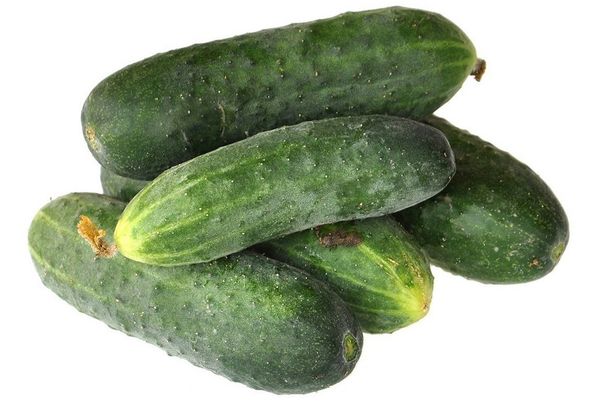
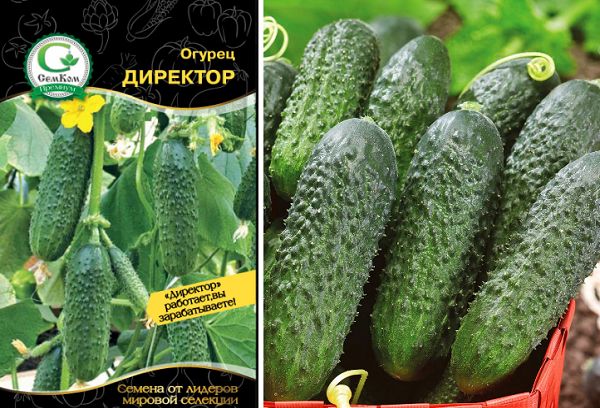
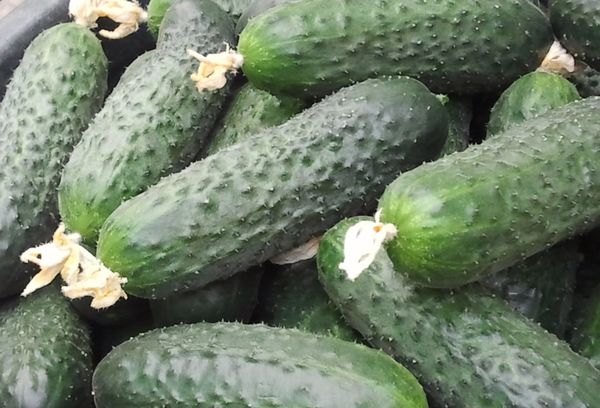
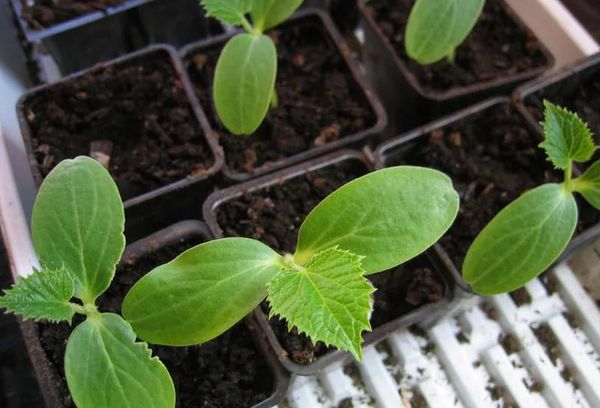
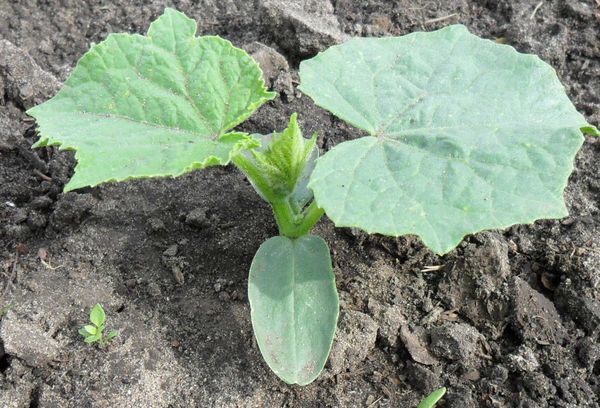
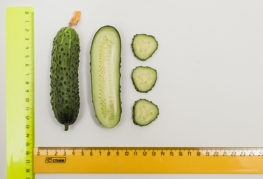
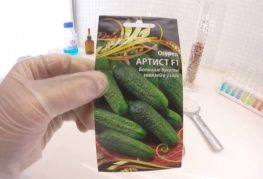

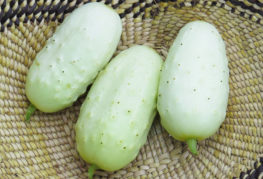

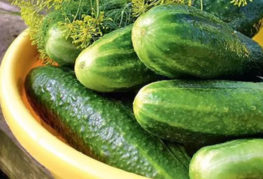
and will be published shortly.